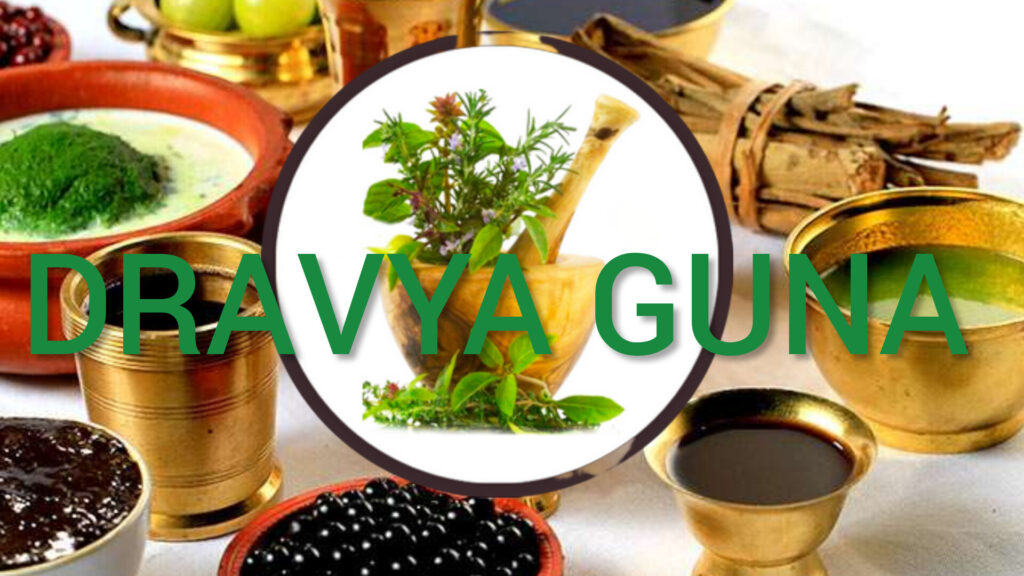
Dravyaguna is a fundamental branch of Ayurveda that deals with the properties, actions, and therapeutic uses of medicinal substances, primarily herbs. It encompasses the pharmacodynamics (karma) and pharmacokinetics (absorption, metabolism, and action) of drugs based on Ayurvedic principles.
Key Components of Dravyaguna:
- Rasa (Taste):
- The primary taste perceived (e.g., sweet, sour, salty, pungent, bitter, astringent).
- Determines immediate physiological effects (e.g., sweet promotes strength, bitter reduces toxins).
- Guna (Properties):
- Physical and pharmacological qualities (e.g., heavy, light, oily, dry, hot, cold).
- Influence digestion, metabolism, and tissue nourishment.
- Virya (Potency):
- Energy (hot or cold) that determines the herb’s heating or cooling effect.
- E.g., Ginger (hot virya) increases digestion, while Sandalwood (cold virya) reduces inflammation.
- Vipaka (Post-digestive Effect):
- The final metabolic transformation of a substance after digestion.
- Can be sweet, sour, or pungent, affecting long-term tissue nourishment.
- Prabhava (Unique Effect):
- Special, unexplained actions beyond rasa-guna-virya-vipaka (e.g., Tulsi’s antimicrobial effect).
Other Aspects of Dravyaguna:
- Identification (Pratyaksha & Pariksha):
- Botanical and morphological study of herbs.
- Collection (Samgrahana):
- Seasonal and time-specific harvesting (e.g., roots in winter, leaves in spring).
- Storage & Preservation (Nidana & Rakshana):
- Methods to prevent degradation (drying, powdering, using honey/ghee as preservatives).
Importance in Ayurveda:
- Helps in selecting the right herb for a specific condition (e.g., Ashwagandha for strength, Haritaki for detox).
- Guides formulation preparation (Churna, Kashaya, Asava-Arishta).
- Ensures safe and effective herbal usage by understanding drug interactions and dosages.
Conclusion:
Dravyaguna is the science of Ayurvedic materia medica, bridging traditional wisdom with practical therapeutics. It ensures that herbs are used optimally for healing while maintaining balance in the body (Dosha-Dhatu-Mala harmony).
